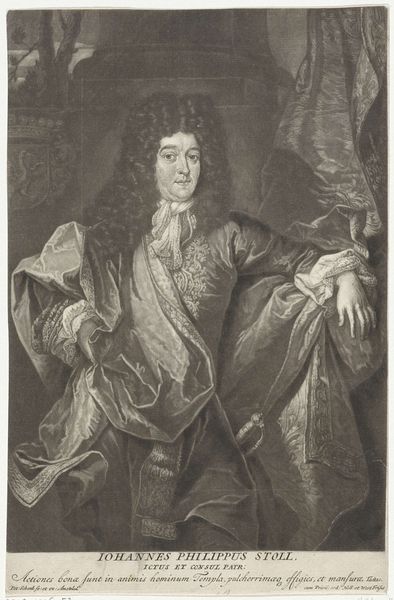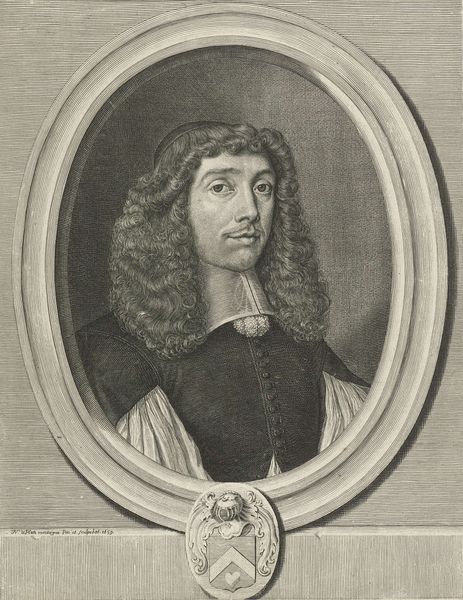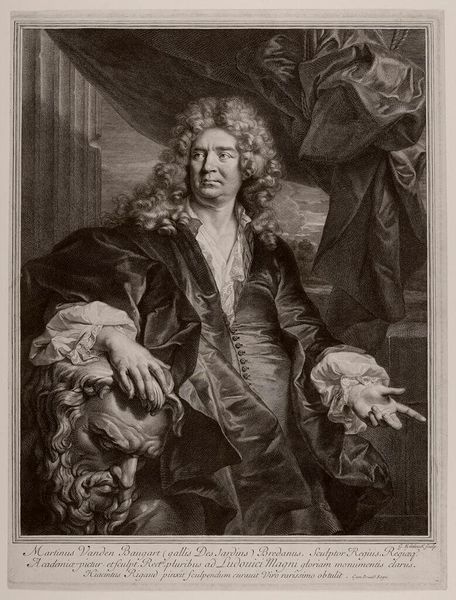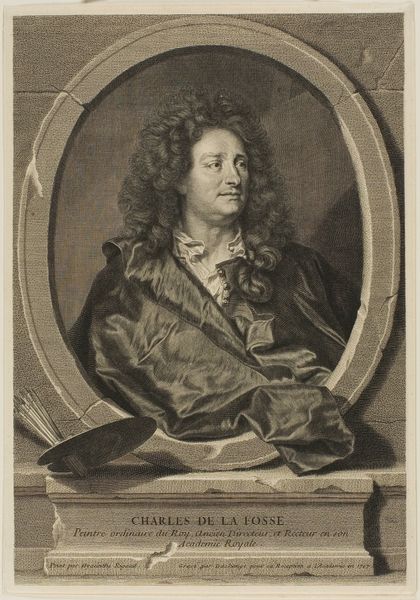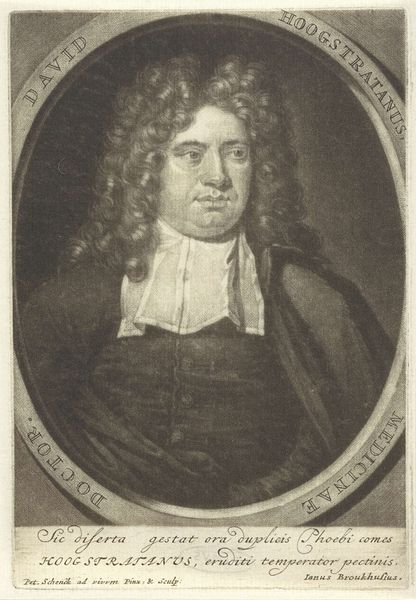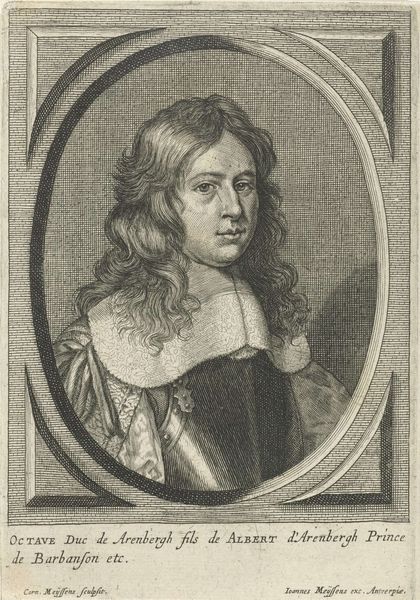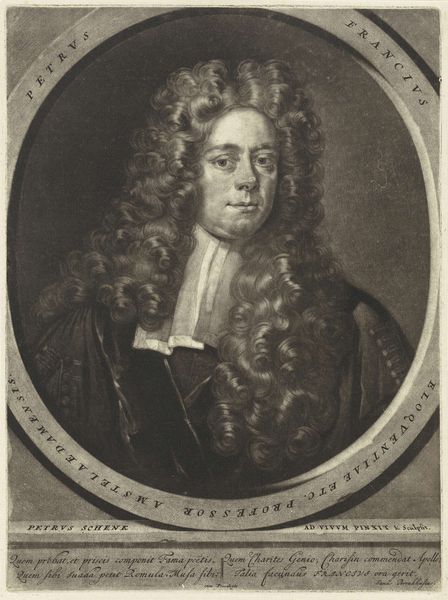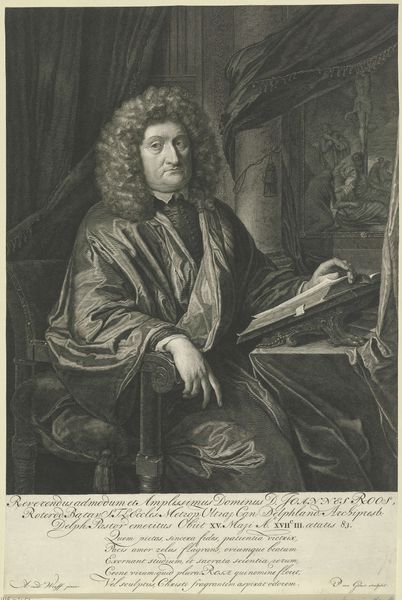
painting, oil-paint
#
portrait
#
baroque
#
painting
#
oil-paint
#
genre-painting
#
history-painting
#
academic-art
Copyright: Public domain
Curator: We're looking at what is believed to be John Riley's portrait of "Sir Thomas Vernon of Twickenham Park," rendered in oil paint. The precise date of its creation remains elusive, shrouded as it is in the mists of time. Editor: My first impression is the striking use of fabric; it really dominates the visual field. The folds of that rich, brown material practically writhe across the canvas, drawing the eye immediately. Curator: Absolutely. The textures are meticulously rendered. Riley was clearly invested in communicating status and materiality. The cascade of lace at the sleeves, for instance, points to Vernon's elite position. We have to consider what it meant to commission and display such a work, asserting dominance through visual representation in that specific historical context. Editor: Indeed, and look how the background functions—almost like stage dressing. That somewhat ambiguous landscape adds a layer of theatricality. However, I'm also intrigued by the colour palette. Note how Riley employs the browns and tans to unify the composition? How might that tonal restraint serve a broader purpose in the visual language here? Curator: Riley likely employs the somber palette as a form of social signalling as he engages in conventions of academic art in portraiture, as were particularly being promoted during the Baroque. In these compositions there’s an intricate exchange between artist, subject, and the potential patrons or public. Consider Vernon’s pose as well. The papers he holds, perhaps symbolic of his authority or business acumen, all feed into a carefully constructed narrative about wealth, power and civic involvement. Editor: So, beyond the immediate aesthetic appeal—and there certainly is an appeal in its texture and tone—we have a window into the socio-political landscape. The museumification and historicisation of works such as this frame not only the artwork, but also how social conventions become encoded, transmitted, and reified within art history. Curator: Precisely. Examining this piece provides insights not only into artistic technique but also into the very fabric of society in that period, prompting broader reflections. Editor: For me, appreciating its historical implications gives new dimension to how I consider its visual rhetoric—from its surface allure to its complex, encoded message about cultural power and elite status.
Comments
No comments
Be the first to comment and join the conversation on the ultimate creative platform.
